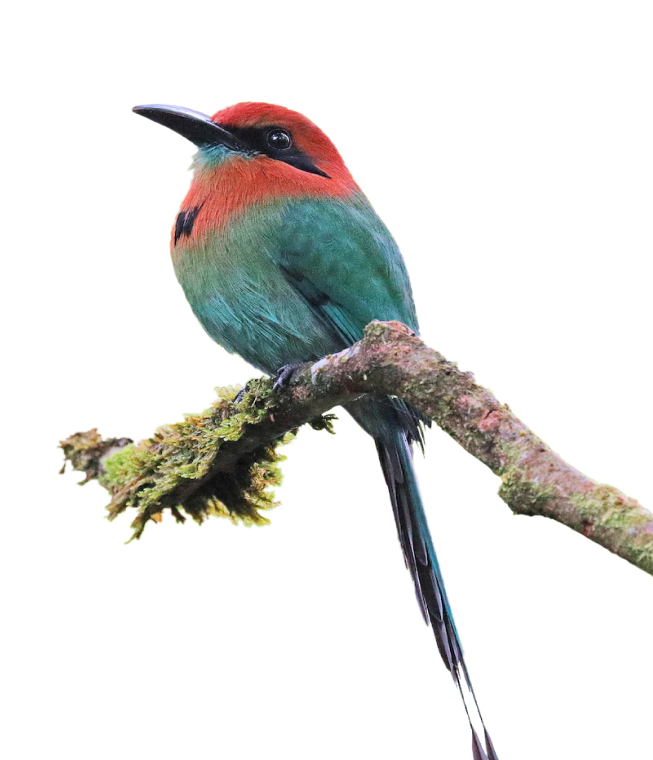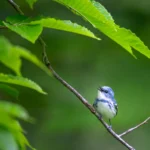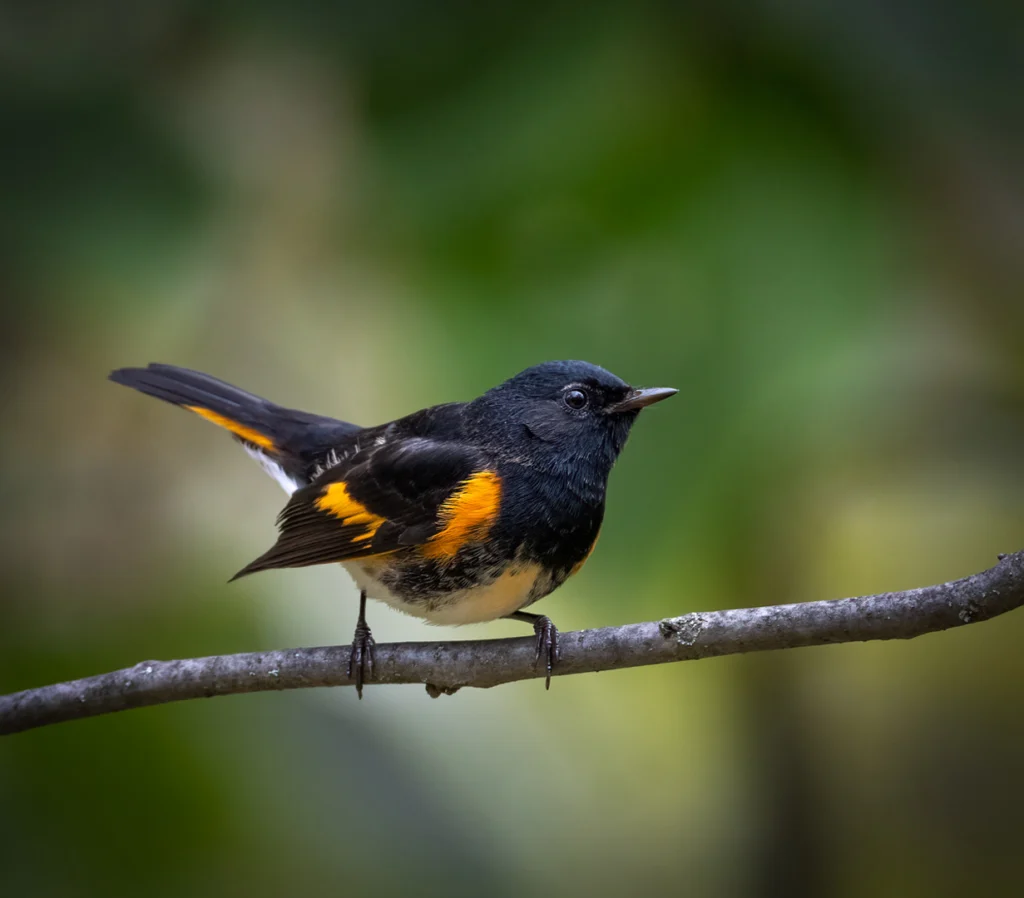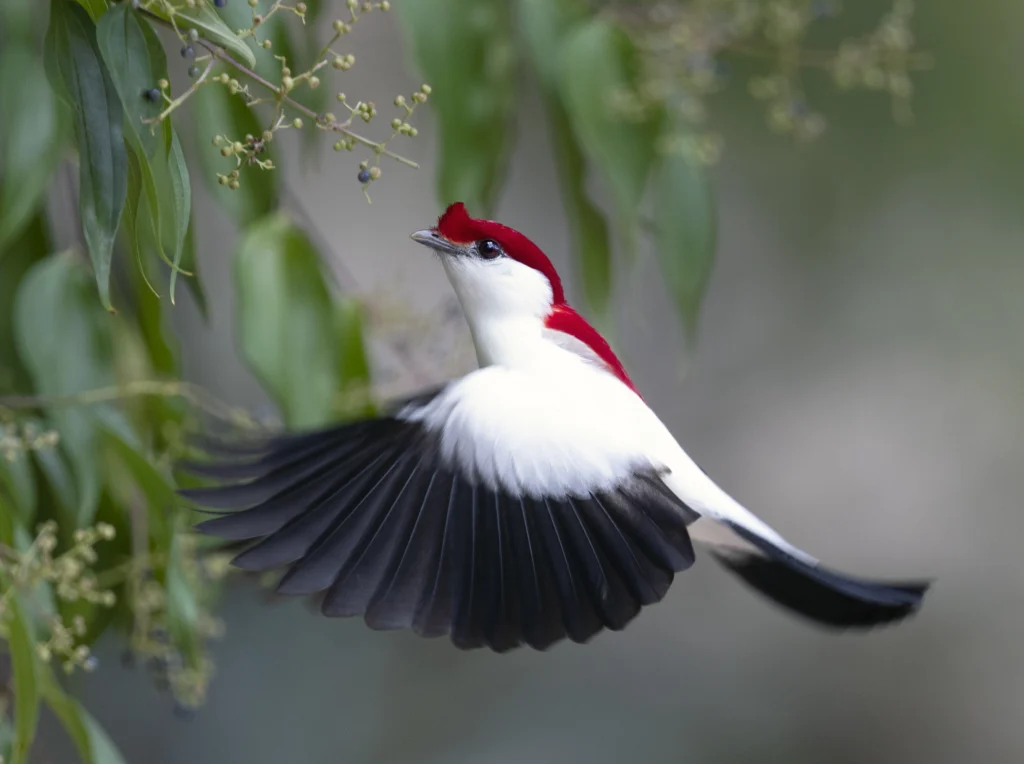
Overview
About
The spectacular Araripe Manakin was only discovered in 1996. The male’s bright, helmet-like crown led to its Portuguese nickname soldadinho-do-araripe, “Little Soldier of Araripe.”
Another local nickname for the Araripe Manakin hints at the bird’s specialized and very limited habitat. Local legend tells of a red-headed bird living by forest springs and streams at the foot of the Araripe Plateau in northeastern Brazil. This bird, known as the galo de nascente (cock of the springs), must not be hunted, as it is o dono do agua — owner of the waters. If this bird is hurt in any way, the story goes, the springs essential to life in the surrounding dry lands will stop flowing.
Numbering only about 800 individuals and found only in a small oasis of lush forest in the middle of vast arid lands, the Araripe Manakin is extremely vulnerable to habitat loss. Protecting its habitat is key to ensuring the species’ survival.
Threats
Birds around the world are declining, and many of them, like the Araripe Manakin, are facing urgent, acute threats. But all birds, from the rarest species to familiar backyard birds, are made more vulnerable by the cumulative impacts of threats like habitat loss. For range-restricted species with very small populations, such as the Araripe Manakin, the loss or fragmentation of their habitat leads to cascading problems.
Habitat Loss
The Araripe Manakin is threatened by habitat loss due to agriculture and human settlement. Diversion, channeling, and piping of the springs and streams are also reducing the area of its gallery forest habitat. Fires set to clear agricultural areas can burn out of control, destroying much larger areas of habitat, including areas that shelter Araripe Manakin. One of the great threats to this small population is genetic isolation brought on by the loss of habitat and habitat connectivity, which can hasten the species’ overall decline.
Conservation Strategies & Projects
The Araripe Manakin is ranked both as a Critically Endangered species by the International Union for Conservation of Nature (IUCN) and as an Alliance for Zero Extinction (AZE) “trigger” species — a designation only given to highly localized species that will likely go extinct if they lose their last remaining one or few sites.
Creating & Maintaining Reserves
In 2014, ABC helped our partner Aquasis purchase 140 acres of critical habitat in a prime breeding area for the Araripe Manakin. Four years later, the partners acquired an additional 170 acres, more than doubling the size of the existing reserve and connecting it to the much larger Araripe National Forest, protecting new breeding territories for this and other rare species, including the Yellow-faced Siskin.
Habitat Resoration
With ABC support, Aquasis and the Araripe Manakin Conservation Project run an experimental tree nursery, control invasive plants, and are beginning a long-term habitat restoration initiative with local partners.
Bird Gallery
Like most manakin species, the Araripe Manakin is sexually dimorphic. The male is an eye-catching combination of red, white, and black, with a forward-sweeping red crest. The female is much more subdued in appearance – dull olive-green, with a smaller crest. Her inconspicuous coloring provides excellent camouflage as she incubates. Juveniles are also a dull green.

Bird Sounds
The male Araripe Manakin’s song is a fluting, multi-noted whistle described as guru-uí or too-too, toot-toodle-oo. Both sexes give a wreee pur call, with an ascending first note.
Ciro Albano, XC29537. Accessible at www.xeno-canto.org/29537.
Jeremy Minns, XC82143. Accessible at www.xeno-canto.org/82143.
Habitat
The Araripe Manakin is found in low to middle levels of riverbank “gallery” forest watered by spring-fed streams. These streams continue into the surrounding dry shrubland and thorn forest known as caatinga.
- Inhabits humid riparian forest with an abundance of vines
- Nests in low native shrubs near slow-moving streams
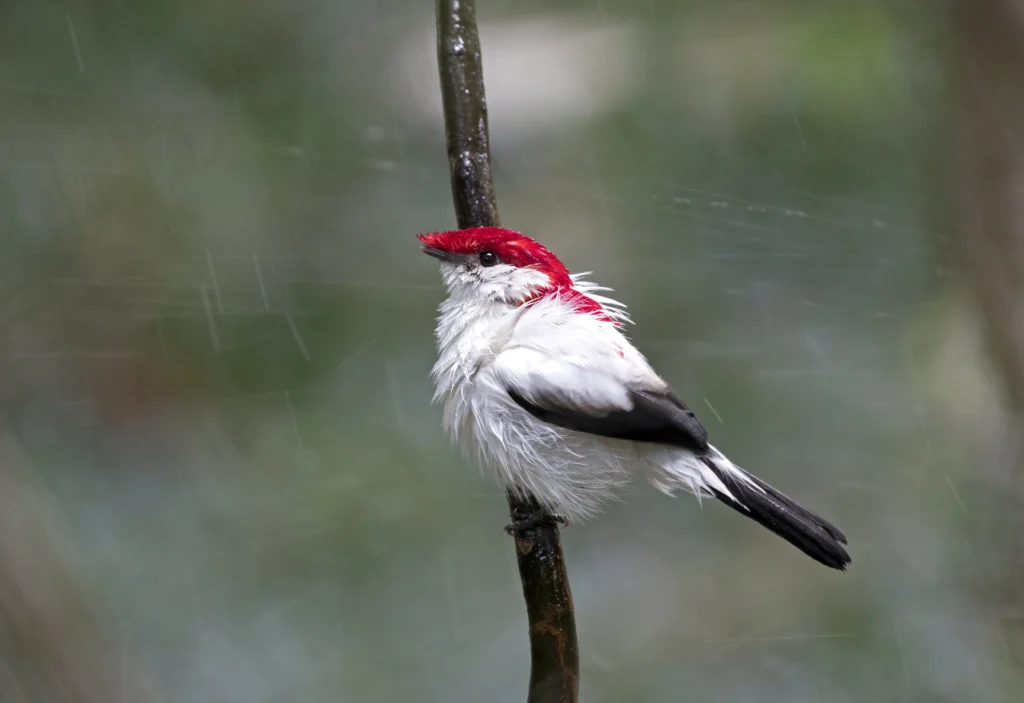
Range & Region

Specific Area
Brazil
Range Detail
The Araripe Manakin is endemic to northeastern Brazil. It is found only in streamside forests on the northeastern slope of the Chapada do Araripe and on the Araripe Plateau, both in the state of Ceará.
Did you know?
The Araripe Manakin may have once ranged over a much wider area, but has become restricted to a tiny range due to habitat loss.
Life History
This “owner of the waters” appears to rely on seasonal rainfall to trigger the start of its breeding cycle, which runs from approximately October through April. The timing of breeding may vary from year to year, depending on the arrival of the rains.
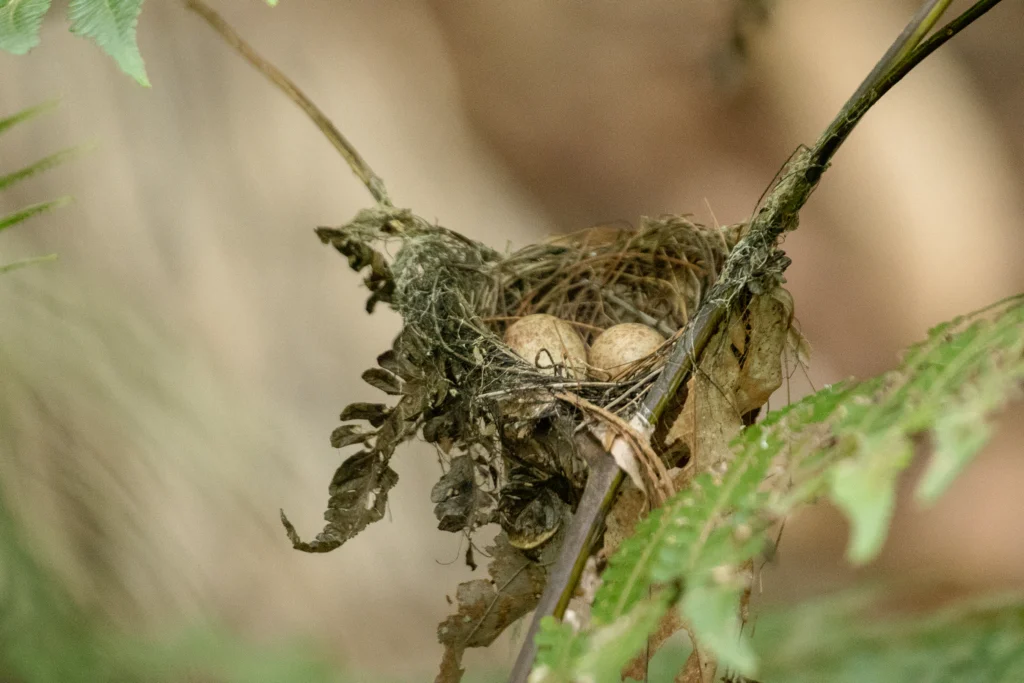
Diet
The Araripe Manakin’s diet consists of small fruits and insects such as ants, beetles, and spiders, taken while hanging upside-down or in aerial sallies. Fruit comprises the majority of this bird’s diet. Although females have a more diverse diet, males consume more beetles, and studies suggest that these carotenoid-rich invertebrates help male Araripe Manakins maintain their eye-catching red plumage accents. (Carotenoids also help boost color in many other bird species, such as the Northern Cardinal, American Goldfinch, and Blackburnian Warbler.)
Courtship
The male Araripe Manakin displays from a perch, raising his wings and tail to show off his striking colors while singing. Like other manakins and many hummingbird species such as the Swallow-tailed Hummingbird and Marvelous Spatuletail, the male Araripe Manakin defines and defends a territory and mates with a female, but takes no other role in nesting and raising young.
Nesting
The female Araripe Manakin builds her nest in a streamside shrub, often just above the water. The pouch-like nest is made of rootlets, dry twigs, and lichens, bound together with elastic spider webs and camouflaged on the outside with dead leaves.
Eggs & Young
Once her nest is complete, the female Araripe Manakin lays a clutch of two eggs, which are beige with brown blotches. She begins to incubate after she’s laid her second egg and lasts for about 19 days. She also does all the chick-raising herself, while the male continues to guard the territory. Little information is available about chicks’ development in the nest, but they fledge after an average of 16 days.







